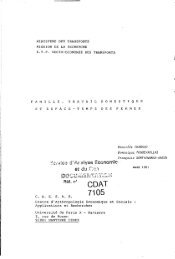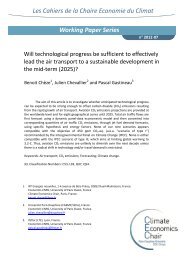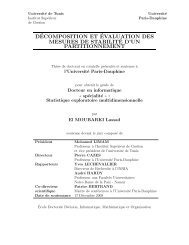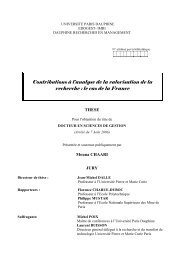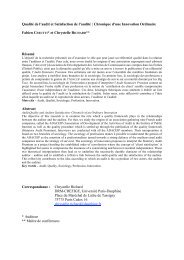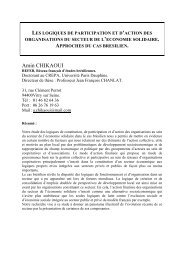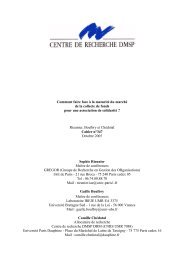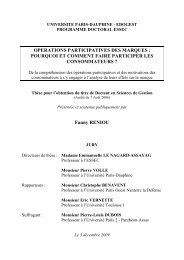Delphine LAUTIER and Alain GALLI Delphine LAUTIER(*) is ...
Delphine LAUTIER and Alain GALLI Delphine LAUTIER(*) is ...
Delphine LAUTIER and Alain GALLI Delphine LAUTIER(*) is ...
You also want an ePaper? Increase the reach of your titles
YUMPU automatically turns print PDFs into web optimized ePapers that Google loves.
estrictive but it significantly reduces the complexity of the analys<strong>is</strong>. Secondly, the<br />
optimal parameters obtained with the two filters are different. During the first period, the<br />
optimal parameters obtained with the extended filter are usually higher than those<br />
associated with the simple filter. The principal differences concern the r<strong>is</strong>k premium λ<br />
<strong>and</strong> the long run mean α . For the second period, the differences are lower, <strong>and</strong> the most<br />
important ones concern the volatilities of the state variables.<br />
These differences show that the linearization has had a significant influence on<br />
the parameters. Nevertheless, the latter have always the same order size that those<br />
obtained by Schwartz in 1997 on the crude oil market <strong>and</strong> on different periods.<br />
The model performances<br />
A simple graphical analys<strong>is</strong> <strong>is</strong> first used to comment the model performances<br />
obtained with the two filters. Then the MPE <strong>and</strong> RMSE criteria are used to compare<br />
them. The results associated with the simple filter are also corrected for the logarithm.<br />
Lastly the innovations obtained with the two filters are compared.<br />
Figure 1 represents the one-month futures prices observed during 1998-2001 <strong>and</strong><br />
compares them with the futures prices estimated with the two filters. Th<strong>is</strong> graphic shows<br />
that firstly, the two filters, especially the simple one, attenuate the range of price<br />
fluctuations. We observed th<strong>is</strong> phenomenon for the two study periods <strong>and</strong> for every<br />
maturity. Secondly, the Kalman filters can be used with extremely volatile data. During<br />
1998-2001, the crude oil prices ranged from USD 11 per barrel to USD 37!<br />
Tables 3 <strong>and</strong> 4 give the performances of Schwartz’s model, measured by the<br />
MPE <strong>and</strong> the RMSE criteria. Three conclusions can be drawn from these results. Firstly,<br />
the model <strong>is</strong> able to reproduce the prices curve quite prec<strong>is</strong>ely. The average MPE <strong>is</strong><br />
always less than 18 cents per barrel <strong>and</strong> the RMSE <strong>is</strong> quite low, especially for the shorter<br />
period (1995-1998). Secondly, if the RMSE <strong>is</strong> the relevant criterion, then the simple filter<br />
<strong>is</strong> always more prec<strong>is</strong>e than the extended one. Thirdly, these measures always decrease<br />
14



